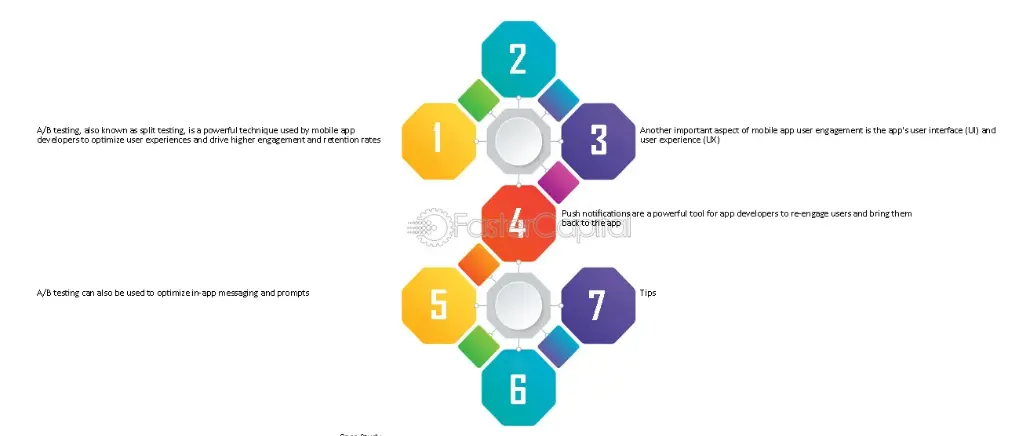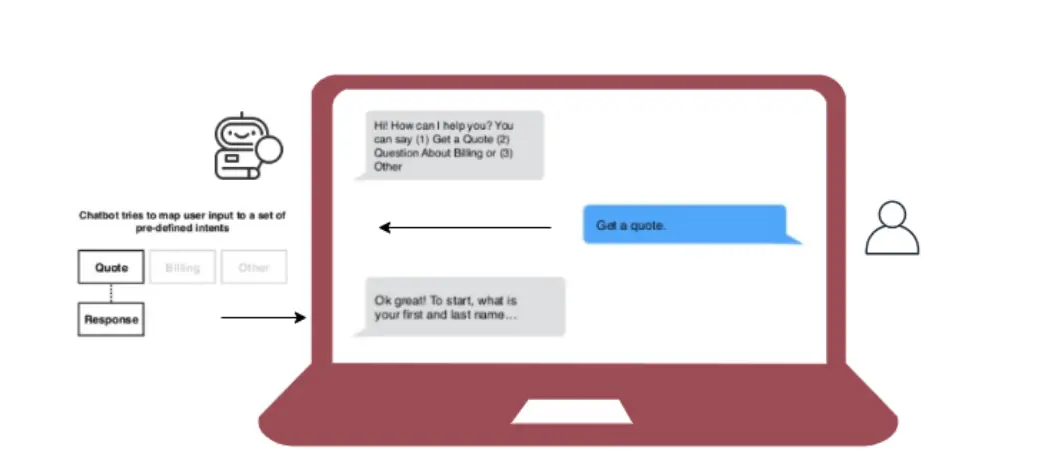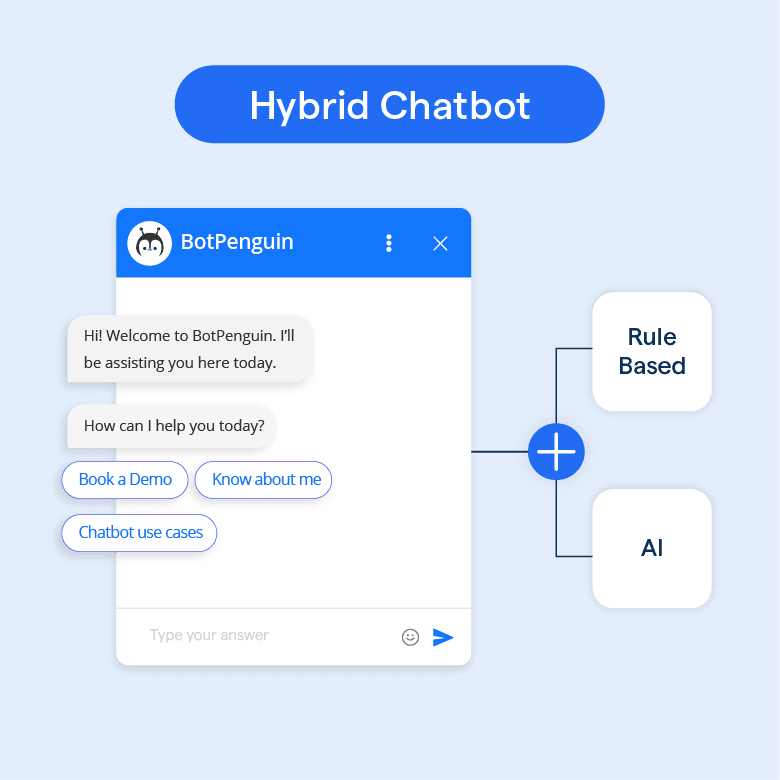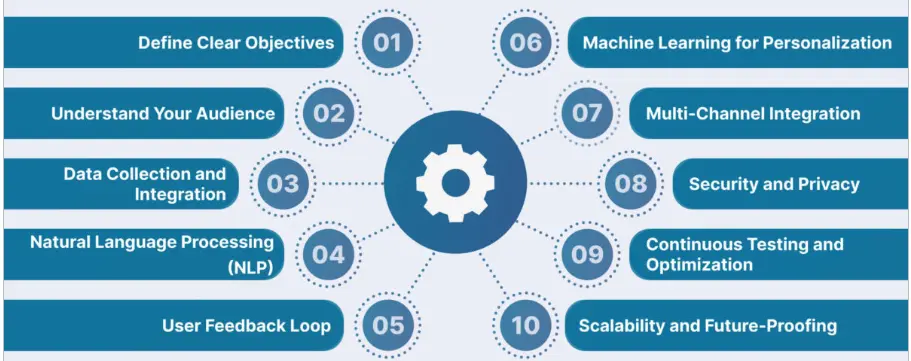Introduction
There are many ways to improve the functionality of your website. One key way is to enhance the user experience of your website. You can improve your web design, add plugins, or modify your content management system. These options are reliable ways to improve the functionality of your website.
However, if you're looking to enhance both the user experience and accessibility to the next level, you should consider website chatbot integration. 51% of customers return to a business that offers live chat support, says Kayako.
That’s the fate of every business that undermines the power of website chatbot integration. website chatbot integration provides 24/7 customer service, keeping your users engaged at all times. They can streamline a lot of tasks, make personalized recommendations and provide specific help to each user, thus making their experience very easy.
In this article, you will learn how website chatbot integration can improve the functionality of your website, in particular the user experience of your website.
To start the adventure and look for information on the benefits of chatbots on websites, let’s first talk about what a chatbot actually is.
What is Website Chatbot Integration?
Website chatbot integration isn’t just about adding a new feature; it’s about transforming how you interact with visitors. Website chatbot integration refers to embedding a chatbot into your site to handle various tasks, from answering customer queries to guiding users through your services. This isn't just about automation; it's about creating an efficient, responsive, and user-friendly environment that enhances the visitor's experience.
Whether you're using a simple website chatbot integration or an advanced AI-powered one, the goal is the same: to make interactions smoother and more productive.
Benefits of Website Chatbot Integration
Let's look at the benefits of website chatbot integration one by one :
Improved Customer Service
Website chatbot integration revolutionizes customer service by ensuring that help is always available.
- 24/7 Availability: Unlike human agents who work fixed hours, a website with chatbot support is available round the clock. This means customers can get answers at any time, even during holidays. A visitor landing on your site at 2 AM doesn’t have to wait for business hours to get help—they get it instantly, improving their overall experience.
- Instant Responses to Common Queries: Many customer queries are repetitive. With website chatbot integration, these can be handled instantly. Users don’t need to wait in long queues for simple information like your return policy or shipping details. The chatbot responds immediately, making the process efficient and satisfying.

Enhanced User Engagement
Engaging users is crucial for reducing bounce rates and increasing conversions.
- Personalized Interactions: A free AI website chatbot integration can tailor conversations based on the user’s past behavior or preferences. Imagine a returning customer being greeted with a message that acknowledges their last purchase and suggests related products. This level of personalization keeps users engaged and makes them feel valued.
- Reducing Bounce Rates: When users don’t find what they’re looking for quickly, they leave. A no-code chatbot builder like BotPenguin can be integrated seamlessly to guide users to the information they need, whether it’s through answering questions or directing them to relevant sections of the website. This helps keep users on your site longer, reducing bounce rates.

Increased Efficiency
Efficiency isn’t just about speed; it’s about making the best use of resources.
- Automating Routine Tasks: Many tasks, such as booking appointments or providing order statuses, don’t require human intervention. A website chatbot integration can handle these, freeing up your team to focus on more complex tasks that require a personal touch. For example, instead of your customer service team spending hours every day answering the same basic questions, they can focus on resolving unique issues that need a human's expertise.
- Freeing Up Human Resources for Complex Issues: When a website chatbot integration takes care of the routine, your staff can dedicate their time to solving more challenging problems. This leads to better service for those who really need human assistance, as your team isn’t bogged down with simple, repetitive tasks.
Suggested Reading:Discover the 5 Best Website Chatbots builder platforms
Data Collection and Insights
Understanding your audience is key to improving their experience.
- Gathering User Data for Better Decision-Making: A website with chatbot integration can help you collect valuable data. For example, if a significant number of users ask about a specific feature, you know it's something worth highlighting or improving. This data can guide decisions on everything from website design to product offerings.
- Real-Time Feedback on User Experience: website chatbot integration can also provide immediate insights into how users are interacting with your site. If users frequently get stuck on a particular page or repeatedly ask the same question, it’s a clear signal that something needs to be addressed. Real-time data means you can make adjustments quickly, improving the overall user experience.
Types of Website chatbot integration
Understanding the different types of chatbots is crucial to choosing the right one for your needs.
Rule-Based Chatbots
Rule-based chatbots are straightforward. They follow predefined rules to respond to user inputs.
- Simple, Predefined Responses: These website chatbot integration are perfect for handling FAQs or guiding users through simple processes. For example, a no-code chatbot builder can be used to create a bot that helps users find specific products or answers questions about store hours. While these bots are limited in flexibility, they excel at handling routine inquiries with consistency.
- Best for Answering Frequently Asked Questions: If your website frequently receives the same queries—like "What are your shipping costs?"—a rule-based chatbot is ideal. It provides instant, accurate answers without needing any advanced AI capabilities.

AI-Powered Chatbots
AI-powered chatbots use machine learning to offer more dynamic and flexible interactions.
- Learning from User Interactions: These chatbots get smarter over time. For example, if users frequently ask about a new feature, the bot can learn to provide more detailed responses or suggest related content. This adaptability ensures that the chatbot becomes more useful the longer it is in operation.
- Handling Complex Queries: Unlike rule-based bots, AI-powered website chatbot integration can manage more intricate queries. Suppose a customer wants to know about combining discounts or has a problem that involves several steps to solve. The AI bot can understand the context and provide a tailored response, making it more suitable for complex customer service tasks.
Hybrid Chatbots
Hybrid chatbots combine the best of both worlds, offering flexibility and reliability.
- Combining Rule-Based and AI Features: A hybrid chatbot can start with rule-based interactions and switch to AI-driven responses when necessary. For example, it might handle simple queries with predefined answers but switch to a more nuanced AI-driven conversation if the user asks something outside its programmed rules.
- Flexible and Adaptable for Various Needs: This type of bot is versatile and can be adapted to a range of scenarios. Whether it’s for simple queries or complex customer interactions, a hybrid chatbot offers a balanced approach, making it a popular choice for businesses looking to integrate chatbots into their websites.

Strategies for Effective website chatbot integration
For a website chatbot integration to truly enhance user experience, it must be integrated thoughtfully.
Identify Key User Needs
Before implementing a website chatbot integration, it’s crucial to understand what your users need most.
- Understanding User Pain Points: Analyze your customer service data to identify the most common issues users face. Whether it’s trouble navigating your site or frequently asked questions, pinpointing these areas will help you design a chatbot that meets real needs. This focus on solving specific pain points makes your chatbot a valuable tool rather than just a novelty.
- Designing website chatbot integration Functionalities to Address Those Needs: Once you know what your users need, you can tailor your website chatbot integration to address these issues. For instance, if customers often get confused during the checkout process, the chatbot can be designed to assist with completing orders, ensuring that users don’t abandon their carts due to frustration.

Keep It Simple
A website chatbot integration’s effectiveness is often linked to how simple and user-friendly it is.
- Avoid Overwhelming Users with Too Many Options: When users are bombarded with too many choices or complex interfaces, they can become frustrated and leave. A well-designed chatbot offers clear, simple options that guide the user efficiently without overwhelming them.
- Focus on Clarity in the Chatbot’s Responses: Users should never feel confused by a chatbot’s responses. Each answer should be clear and direct, providing the necessary information without unnecessary jargon or fluff. A simple, straightforward approach ensures that users get what they need quickly and easily.
Personalize the Experience
Personalization is key to making users feel valued and understood.
- Using User Data to Tailor Interactions: A website chatbot integration that remembers previous interactions or recognizes repeat visitors can make users feel more connected. For example, if a customer frequently purchases a particular type of product, the chatbot can greet them with recommendations based on their past behaviour, enhancing the shopping experience.
- Building a Conversational Tone that Reflects Your Brand: Your website chatbot integration’s tone should align with your brand’s personality. If your brand is casual and fun, the bot should be too. Conversely, if your brand is professional and formal, the chatbot should reflect that. Consistency in tone helps build trust and reinforces your brand identity.
Evaluating the performance of your website chatbot integration
And now? It's time to evaluate his performance! You won't just sit back and relax. You'll dive in to see the magic he produces (or where the magic needs a little more sparkle).
Measuring success
Defining the success of your website chatbot can seem like trying to capture a rainbow. It's all about KPIs (Key Performance Indicators). Let's explore!
User interaction: Your website chatbot is your website's party moderator. The highlight of the party is the party everyone joins, right? The frequency, length and type of conversations are all indicators of engagement.
Accuracy of answers: The appeal of your website AI chatbot is its ability to provide accurate answers. Track how often your chatbot resolves queries without human intervention. The higher the accuracy, the better your chatbot will be.
Lead generation: If your website chatbot was a fisherman, leads would be its catch. Track how many users took a meaningful action (such as making a purchase or signing up for your newsletter) after interacting with your chatbot.
User satisfaction: Ultimately, it all comes down to whether your users are satisfied. Collecting user feedback on a regular basis will give you valuable insights into how your website chatbot is perceived and where improvements are needed.
Continuous improvement
Now that you’re tracking the performance of your website chatbot, it’s time to channel your inner scientist and experiment. With continuous tweaking and optimization, your chatbot will evolve and get better with every interaction.
Learn from your mistakes: Even the best website AI chatbots are not perfect. They will make mistakes and misunderstandings, but each one is a learning opportunity. Analyze where your chatbot stumbles and focus on improving those areas.
Choosing the Best Tools for website chatbot integration
The tools you choose for website chatbot integration into your website can make a significant difference in its effectiveness.
Consider Your Website Platform
Not all website chatbot integration tools are compatible with every website platform.
- Compatibility with Existing Systems: Before choosing a chatbot tool, ensure it works well with your current website platform. For instance, some tools might integrate seamlessly with WordPress but struggle with other platforms. It’s important to choose a tool that won’t require significant modifications to your existing site structure.
- Ease of Integration: The process of adding a chatbot to your site should be straightforward. Tools like BotPenguin, a free AI chatbot for websites, offer no-code solutions that make integration simple, even for those without technical expertise. A tool that’s easy to implement saves time and reduces the risk of errors during the setup process.
Evaluate Features
Not all website chatbot integration are created equal, and their features can vary widely.
- AI Capabilities, Customization Options, Scalability: When evaluating tools, look at what features they offer. Does the chatbot have advanced AI capabilities that can handle complex queries? Can you customize it to fit your brand’s look and feel? Is it scalable as your business grows? These are important factors to consider to ensure the chatbot can meet your needs both now and in the future.
Assess User Support and Documentation
A good website chatbot integration tool is supported by excellent user resources :
- Importance of Accessible Support: Even the best tools can encounter issues. Ensure that the chatbot provider offers robust support, whether through direct contact or comprehensive online resources. If something goes wrong, you want to be able to resolve it quickly without disrupting your service.
- Availability of Detailed Guides and Resources: Documentation is key, especially if you’re using a no-code chatbot builder. Detailed guides can help you set up and optimize your chatbot, ensuring website chatbot integration
Conclusion
Website chatbot integration isn't just about keeping up with trends; it's about enhancing the overall user experience. From improving customer service to boosting engagement and efficiency, the benefits of website chatbot integration are clear. Whether you choose a simple rule-based bot or a sophisticated AI-powered one, the key is to tailor the solution to your users' needs. By selecting the right tools and strategies, you can create a seamless, personalized interaction that keeps users coming back.
From improving customer satisfaction to driving higher engagement rates, website chatbot integration can transform how users interact with your brand. Furthermore, the ability to customize and train chatbots ensures they evolve with your business needs, offering a scalable solution for both small and large enterprises. Cool and helpful features offered by your website chatbot integration can truly enhance your user experience and make them visit your website again, and again!
BotPenguin stands out as a top choice for businesses looking for website chatbot integration. With its no-coding platform, drag-and-drop builder, and extensive integration capabilities, BotPenguin makes it easy to deploy highly functional and tailored chatbots. Whether you're in e-commerce, healthcare, or any other industry, BotPenguin’s AI-powered solutions can help you elevate user experience, boost efficiency, and drive growth.
So what are you waiting for? Sign up today and explore how BotPenguin can revolutionize your customer interactions and take your business to the next level.
Frequently Asked Questions (FAQs)
Are chatbots effective for all types of websites?
Yes, chatbots can be effective across various websites, from e-commerce to service-oriented sites. They adapt to different industries by offering tailored support, answering common queries, and improving navigation, enhancing the overall user experience.
What are the key benefits of integrating chatbots into a website?
Integrating chatbots into a website offers 24/7 support, faster response times, personalized assistance, and streamlined navigation. These benefits lead to improved user satisfaction, reduced bounce rates, and higher conversion rates.
Can chatbots help reduce website bounce rates?
Yes, chatbots can reduce bounce rates by engaging visitors immediately, answering their questions, and guiding them to relevant content. This helps retain users on the site and encourages further exploration.
Do chatbots require extensive setup and maintenance?
Modern chatbots are designed for easy integration with minimal setup. Maintenance involves updating content and improving responses based on user interactions. AI-powered chatbots continuously learn, requiring less manual effort over time.
Can chatbots handle complex customer queries?
Advanced chatbots can handle complex queries by using AI and machine learning. They analyze user input, provide accurate responses, and escalate issues to human agents when necessary, ensuring a seamless user experience.

